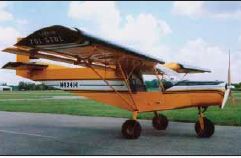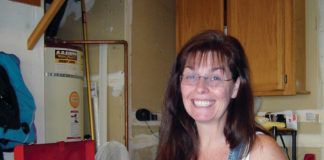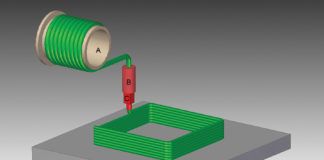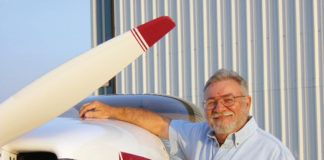It all started out innocently enough. In April 1986, a young, dark-haired pilot named Dick asked a young, dark-haired engineer named Jim if there was a cheap, lightweight way to time how long a particular fuel tank had been on burn. It seems that there were 17 fuel tanks on a particular aircraft, and it was mission-critical that each of the tanks be accurately timed for burn. Not only was the amount of fuel important, but the balance of the airplane required that fuel be burned equally left-right and fore-aft. The aircraft, of course, was Voyager, and the mission was to go around the world without landing or refueling.
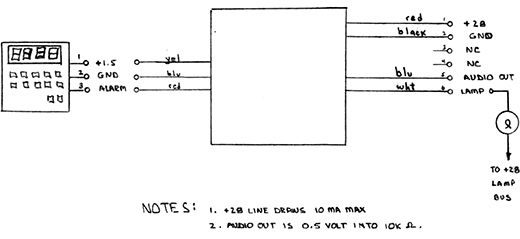
The original drawing from which the Voyager clock was designed.
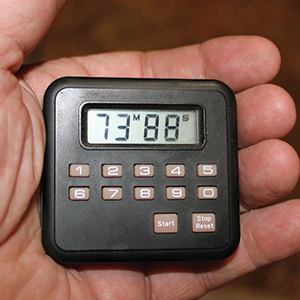
The little West Bend timer that started the whole clock thing.
Today those two gray-haired old fogeys are still using the cutting-edge technology pioneered on that mission. The timer? Straight out of Q-Mart, a West Bend kitchen timer that was modified to run on 28 volts; the alarm signal was picked off and amplified to run into an audio panel and thus to the pilot’s headphones.
To this day, I’ve got the twin to that kitchen timer on the panel of the blue-on-blue 182 in my hangar. And, truth be told, I changed the original 1986 battery just before Oshkosh this year. Not that it needed to be changed, but I thought that 25-year-old battery might just poop out on me in the middle of my Oshkosh forum this year. Speaking of Oshkosh, if you get to the museum, look at the upper left corner of the Voyager instrument panel mockup at the little timer sitting there.
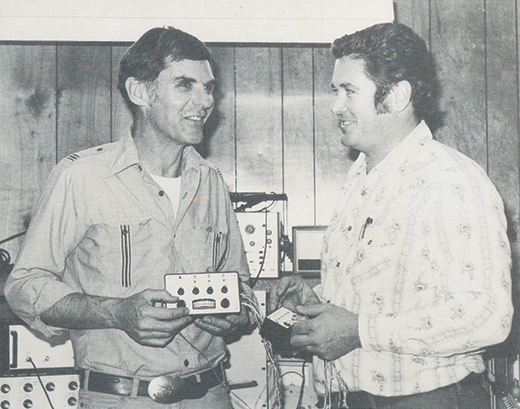
Dick and the author back when they both had darker hair than they do now.
Having said all that, I thought it might be informative if I shared some research I did for that forum…some things must have gotten better in that quarter-century—and so they have. I figured out a neat way to make that installation semipermanent. Here are the candidates in no particular order, though I do have a preference for one of them:
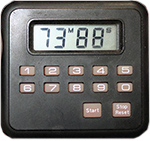
West Bend 40007: The little one that started it all. Runs on a single coin cell battery. Timer only, no clock. Can count up or down. Flat black plastic case and flat on the back. 2½ inches wide by 2¼ inches high. $3.95 in 1986 dollars. Bad news? No longer available.
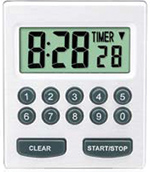
Radio Shack 63-248: Runs on a single AAA cell. Silver-chrome with a flat back. Rather large at 2½x3 inches. Timer only, no clock. Has a back clip that has to be removed. Times up to 9 hours, 59 minutes. $15.
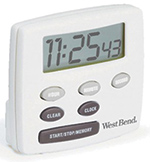
West Bend 40055: Runs on a single AAA cell. Clock and timer. 2½x2½ inches. Quarter-inch “bump” on the back that can be taken up with a quarter-inch plywood shim glued to the case. Has a back clip that has to be removed. $10.
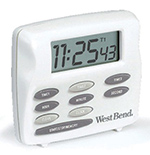
West Bend 40053: Runs on a single AAA cell. Clock and three separate timers. Rather large at 24/5×2½ inches. Same bump and back clip as 40055. $15.
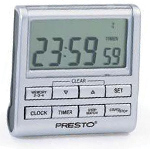
Presto 04212: My favorite of the new breed. Runs on a single AAA cell and has that stupid bump and clip on the back, but it is the smallest of the lot (2¼x2¼ inches) with clock and quadruple timer. One of the timers simply counts up or down, but the other three retain their most recent values in memory. Much neater gray housing, rather than the white or silver of the others. $10.
So how do we go about converting this neat little clock into something that fits into the clock hole on the instrument panel? The first step is to construct an aluminum plate that fits a 2¼-inch instrument hole mount. Then a small rectangular plate to fit onto the instrument plate, a couple of hook’n’loop dots onto the small plate, a pair of matching dots onto the back of the clock, and that’s all there is to it.
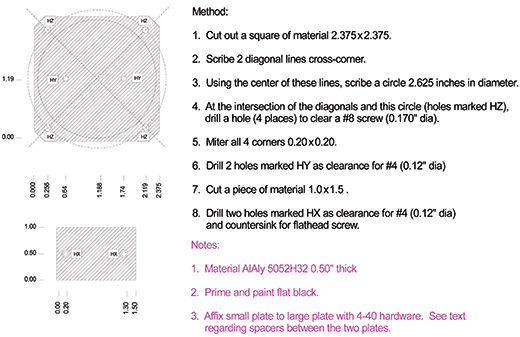
The engineering drawing for making the clock plates.
A Few Notes
If you have to use the plywood shim to keep the battery bump from hitting the instrument panel, make sure that you notice whether or not your clock/timer has a reset hole on the back. If the clock ever completely loses its brains, this is the only way to do a factory reset on it. Don’t cover the hole up. Use a really good glue to affix the plywood to the clock.
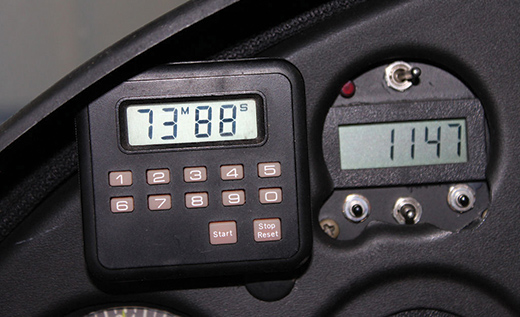
The original West Bend timer mounted on the 182 instrument panel next to the November 2001 Kitplanes® Radio Shack/Trumeter clock.
Depending on how your instrument panel is set up, you may have to use spacers between the instrument hole plate and the rectangular plate to keep the clock from hitting the instrument panel. You can use regular spacers if you can find them in the aviation department at your local Ace Hardware, or, like most of us do when we can’t find anything, use extra nuts as spacers.
There, now—a complete column without using the word “electronics” once. You now have a $10 clock on your panel that is every bit as good as the $250 model in the aviation catalog.










